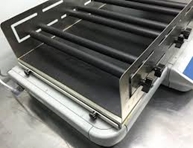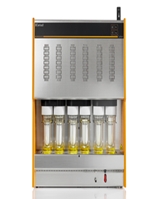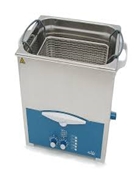Submitted by admin on

Method miniaturisation is the squeezing of as many instrumental and analytical parameters as possible to optimise efficiency. Variables that can be examined include extraction solvent, extraction technique, injection onto the column, separation on column, quantification via the detector and finally the cycle time of one analytical run. As we strive to make the method more robust we should improve quality, obtain an equivalent if not better Limit of Detection (LOD) and deliver the result more quickly and hence more cheaply.
The extraction technique
Extraction techniques for solids have typically evolved through speed and capacity [1], as efficiency has historically been universally satisfactory. Any piece of equipment that can run more samples in parallel, per unit space, should be investigated in this process. Soxhlet extraction was widely used in the 1990’s and still is in some labs (!), yet it only extracts one sample at a time, this is hardly high throughput and there are other, quicker methods that give the same recoveries, such as soxtherm, sonication or orbital shaking.




Diagram 1: Evolution of semi-volatile soil extraction
Soxtherm introduced a level of parallel extraction into the equation but this pales into insignificance when compared to high energy sonication. Whilst the latter has capacity for say 60 soil samples per hour (in EPA vials), solvent wettability for a sticky clay may be a challenge. In comparison an orbital shake at 300rpm for 20 minutes should reduce lumps of clay in a solvent to finely divided solutions and allow anything up to 600 samples per hour given its larger surface area and stacking capabilities. Other, more expensive kit, such as Accelerated Solvent Extraction (ASE) uses temperature and pressure to force solvent through a solid matrix, for normal soils this may be overkill but for sediments it may be the only solution, it doesn’t have a great capacity (50 samples in 15 hours) so is similar to microwave extraction in that respect. The latter technique can handle solvents and acids although hotspots can be an issue. In short, a little research, some experiments and a robust method validation should provide the route to a bullet-proof cost-effective methodology.
| 6 PAH soils / hr soxtherm | 60 PAH soils / hr sonicate | |
| analyst cost £ | 1.1 | 0.1 |
| standards solvents etc. £ | 0.5 | 0.1 |
| vessels £ | 1 | 0.14 |
| extraction cost per sample £ | 2.6 | 0.34 |
Table 1: Cost benefit analysis / cost per sample table
Acknowledgements:
Gerstel
References:
1] USEPA SW-846 Revisions 1 to 5 —Test Methods for Evaluating Solid Waste, Physical/Chemical Methods, contains USEPA 8270 method - semivolatile organic pollutants in solid waste, soil, water, and air matrices using GCMS.
